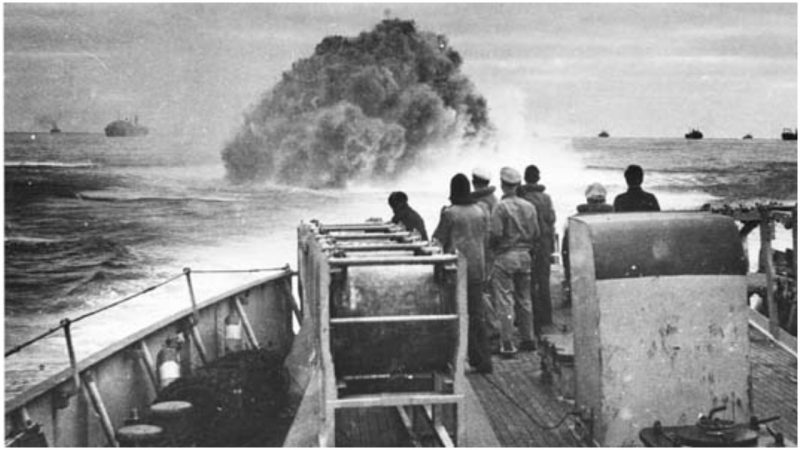In most case, depth charges detonated next to a submarine, but the damage inflicted by the pressure wave created leaks and forced the submarine to surface.
The emergence of submarines became a catalyst in the history of the development of the Navy. The first submarines brought fear to the sailors because to confront an enemy that was hidden by the abyss of the sea was almost unreal.
Soon, the fight against enemy submarines became an important task for the navies of various countries. The military leaderships were presented with the tasks of changing the tactics of warfare and conducting a search for new weapons to counter this underwater threat.
In 1914, the first depth charges were created in the UK, and after successful tests were adopted by the British Navy.
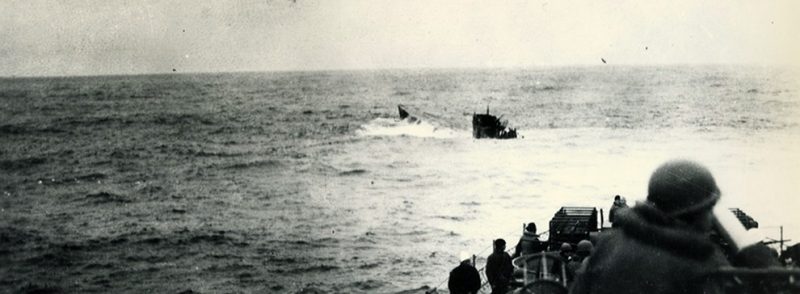
The first depth charges were not perfect weapons against submarines. The bombs had a barrel-shaped hull filled with TNT or amatol. They were dumped from the stern or side of the ship to the place where the enemy submarines were supposed to be. After sinking underwater, a bomb was detonated by the effect of water pressure at a pre-selected depth.
The blast wave underwater created an immense amount of pressure which was effective even at a distance from the epicenter. As a result, a direct hit against a submarine was not necessary to destroy the hull, although it is preferable. The closer to the submarine that the depth charge is detonated, the greater the destruction.
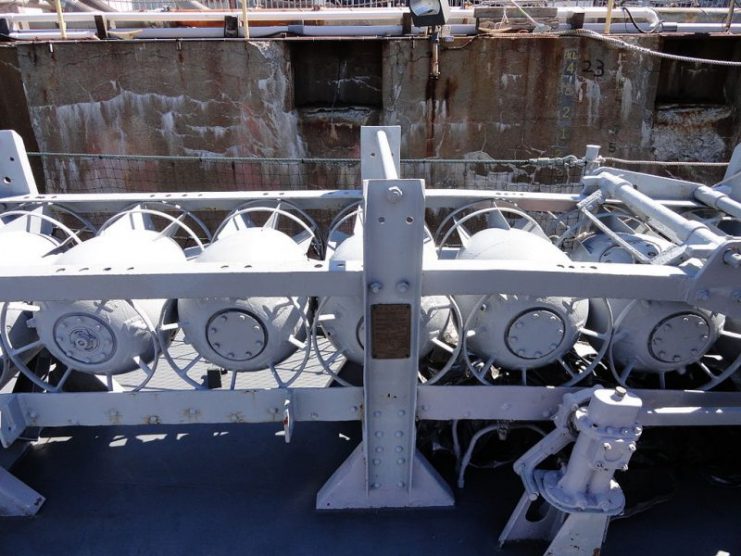
In most case, depth charges detonated next to a submarine, but the damage inflicted by the pressure wave created leaks and forced the submarine to surface. After the submarine floated to the surface, the naval ship could use its guns or ram it. However, between 1915 and the end of 1917, depth charges destroyed only nine U-boats.
The initial method of deploying depth charges was ineffective. Often, after the bomb hit the water, it was picked up by the wake of the ship and changed direction. Later, throwers were invented, which greatly increased the efficiency of using depth charges.
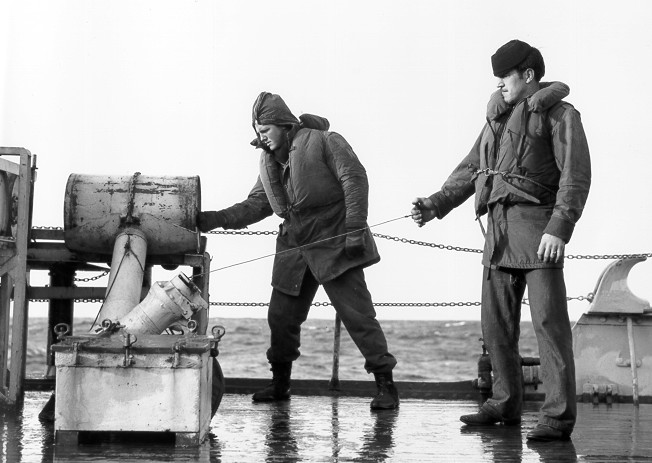
An interesting question arises: who invented the depth charge? The curator of the Museum of Naval Firepower, Chris Henry, made an interesting discovery during the audit of the museum’s archives. According to the documentation, Herbert Taylor, a Royal Navy inventor based in Portsmouth, developed the depth charge.
‘’It is often overlooked how or where the depth charge was developed. It has only now come to light that the man responsible for their design was a frenetic inventor who is unknown outside the world of underwater weapons,” Chris Henry told the 24 Hour Museum.
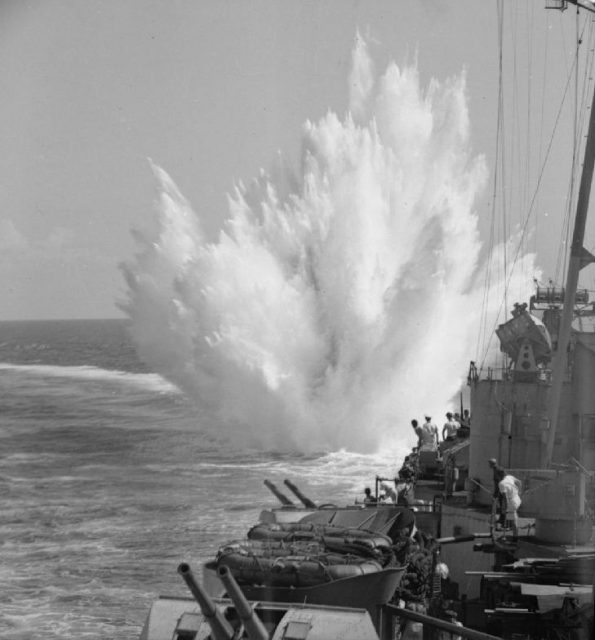
In March 1917, the United States Government requested complete design drawings for the device from the British inventor. According to the archives donated by Taylor’s widow, there was an intriguing legal battle for the rights to his projects.
“The depth charge was such a successful device that it attracted the attention of the United States who requested full working drawings of the devices in March 1917,” said Chris Henry.
Having acquired the blueprints, US Navy engineer Minkler and Commander Fullinwider of the US Bureau of Naval Ordnance made some changes and patented their development in the USA. It seems that this was done so as not to pay Taylor for his original drawings. It was deemed acceptable that the terror caused by German submarines should cast aside the protocol on intellectual property rights.
According to Chris Henry, the question of the design of weapons in wartime has always been a “grey area” and could result to the development of weapons by one party, only to find that those same weapons are then used against them.
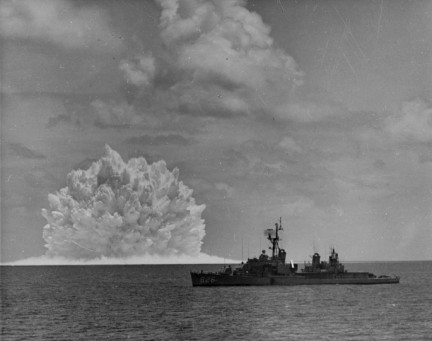
In the case of Taylor, Chris Henry believes that “this unusual procedure was undertaken during wartime to prevent the delay which would otherwise have occurred from negotiation and to effect complete co-operation with the United States.”
The result of Taylor’s struggle for his invention to receive both international credit and remuneration remains unknown. In any event, this did not prevent him from continuing to work on projects relating to other types of weapons. A rare prototype of the Depth Charge Thrower designed by Taylor is now on show at The Museum of Naval Firepower.
Thanks to his creative and technological talent, Taylor was important to the Navy. In 1939, the Admiralty urged him to return to service and continue to develop new weapons throughout the Second World War.
Among other inventions of Taylor’s are a depth charge pistol, demolitions, ‘X’ craft, Chariots, and other weapons, some of which are still used by the Royal Navy.
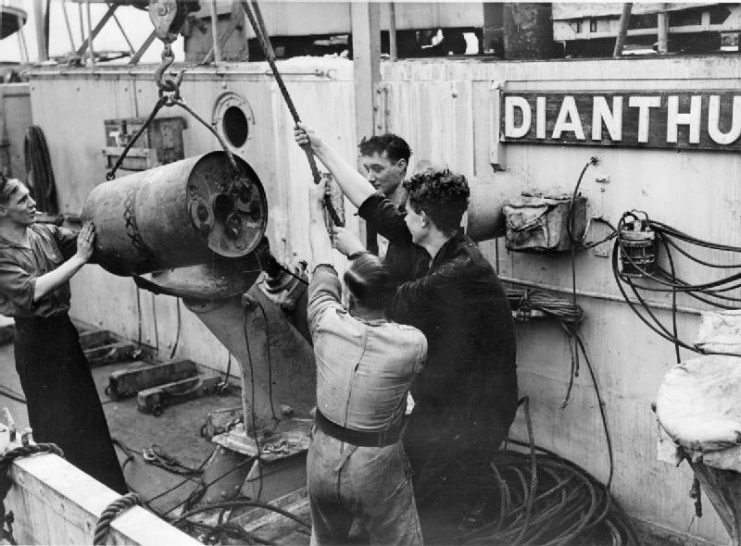
Nowadays, deep launchers are computer-controlled mortars that can fire 400-foot deep charges up to 2,000 yards. In addition, atomic depth charges and other such bombs which can be dropped from an aircraft were developed during the Cold War.
Read another story from us: Loose Lips Do Sink Ships
Despite the fact that guided torpedoes are gradually replacing modern depth charges, they continue to be part of the armament of the largest naval forces in the world. Herbert Taylor is the father of the depth bomb, who created an effective weapon against the fight against submarines.
